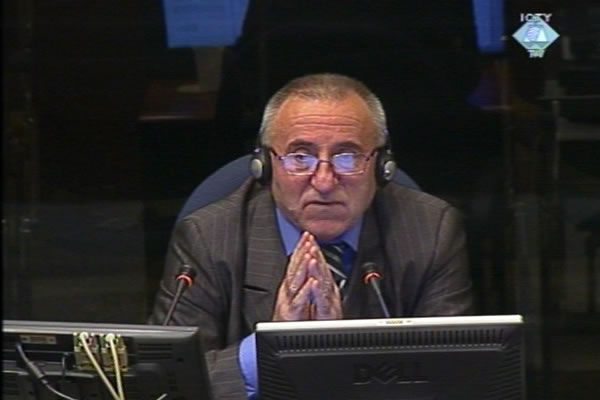Home
’CLUMSY’ MILITARY OPERATIVES
Unlike Nikola Sainovic’s defense, General Lazarevic doesn’t contest the authenticity of the documents from 1999 purportedly issued by the Joint Command. Lazarevic claims that they were military orders and that the politicians and the Ministry of Interior had nothing to do with them. His operatives, he says, used the term joint command ‘clumsily’, because the army and police had separate commands during the whole war
 Vladimir Lazarevic testifying in his defense
Vladimir Lazarevic testifying in his defense Since the beginning of the trial of six former Serbian officials charged with Kosovo crimes in 1999, their defense counsel claim that Joint Command of army and police didn’t exist. The defense of Nikola Sainovic, who is identified in the indictment as the person who commanded this body to implement Slobodan Milosevic’s plan for the expulsion of the Albanian civilians has been constantly contesting the authenticity of a series of documents purportedly issued by the Joint Command in 1999. They bear no stamps and signatures, Sainovic’s defense notes. Now, on the third day of his testimony in his own defense, General Vladimir Lazarevic, former VJ Pristina Corps commander, confirmed they were authentic.
Yet Lazarevic claims that politicians, Sainovic included, had nothing to do with the Joint Command orders: this was a military issue, he says. According to him, the documents were issued by his Pristina Corps and the term Joint Command in the context of the orders meant only that they concerned ‘coordinated actions’ of the army and police. Both retained their separate chains of command, though.
One of these orders, issued on 22 March 1999, notes that ’the Joint Command shall command and control all units’ in the course of an action in the Pristina area. The presiding judge noted that this didn’t clearly demonstrate that there would be two commands. Lazarevic maintained that there was no single command body, saying that his operatives ’clumsily’ used the tern ‘joint command’ in these orders.
In its attempt to prove that those were ‘combined operations’ of the army and police with two separate commands, the defense showed a document from the 549th Motorized Brigade of 26 March 1999. The document states that the ’command over the security forces’ would be combined in the Joint Command of the army and the police’. The defense counsel insisted that the interpreters be careful with the word ‘combined’ and they were. The presiding judge then concluded that the documents showed that the Joint Command existed.
Linked Reports
- Case : Sainovic et al.
- 2007-10-26 NEBOJSA PAVKOVIC’S DEFENSE RESTS AFTER FOUR DAYS
- 2007-10-25 DID THE JOINT COMMAND ACTUALLY COMMAND?
- 2007-10-22 PAVKOVIC’S DEFENSE CALLS ITS FIRST WITNESSES
- 2007-11-09 LAZAREVIC’S CONTRIBUTION TO ’MILITARY SCIENCE’
- 2007-11-12 LONG JOURNEY THROUGH DOCUMENTS
- 2007-11-14 COMBINED, NOT JOINT COMMAND
